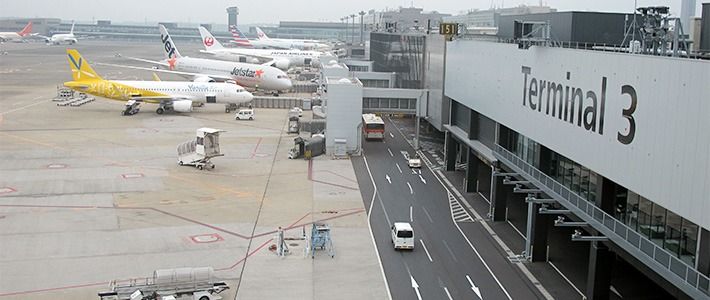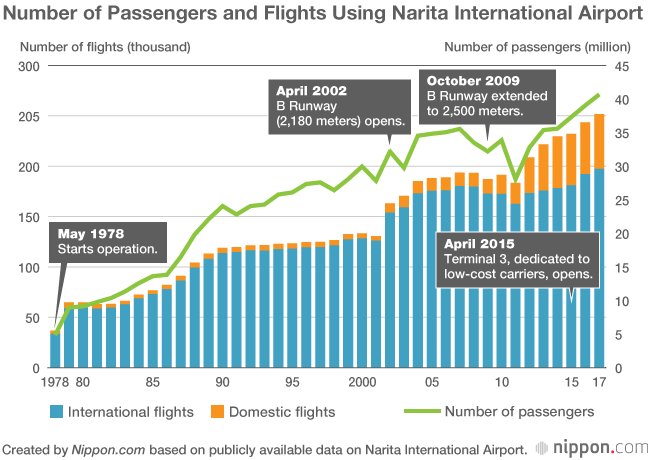
Narita at 40 Faces Challenges from Haneda and Asia
Economy- English
- 日本語
- 简体字
- 繁體字
- Français
- Español
- العربية
- Русский
In May 2018, Narita International Airport celebrated its fortieth anniversary. In 2017, the number of passengers using the airport surpassed the 40-million mark for the first time, rising 4% to 40.7 million. Compared to 1979, which was the airport’s first full year of operation, there are now 3.3 times more international flights, 9 times more domestic flights, and 4.5 times more passengers. At the same time, Narita faces stiff competition from Haneda International Airport and other Asian air hubs.

Narita International Airport initially had only one runway. In 1986, construction began on a second runway, but it proved difficult to purchase the needed land amid a fierce protest movement against the airport expansion. It was not until 24 years later, in 2002, that flight operations could tentatively begin on the second, 2,180-meter runway. The B runway was extended to 2,500 meters in 2009. But other airports, such as Incheon International Airport, Singapore Changi Airport, and Shanghai Pudong International Airport, upgraded their facilities in the meantime to become major hubs in East Asia. Narita also faces competition within Japan, as the more centrally located Haneda International Airport in Tokyo opened a fourth runway in 2010, shifting its focus from domestic flights to also include a wide range of international flights.
Amid this intensifying competition, Narita has responded with initiatives to generate new customer demand, such as opening a third passenger terminal in April 2015 that specifically accommodates low-cost carriers.
(Translated from Japanese. Banner photo: Narita’s Terminal 3 that opened in April 2015. ©Jiji.)